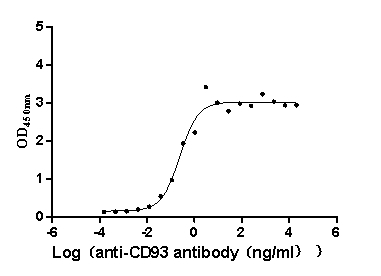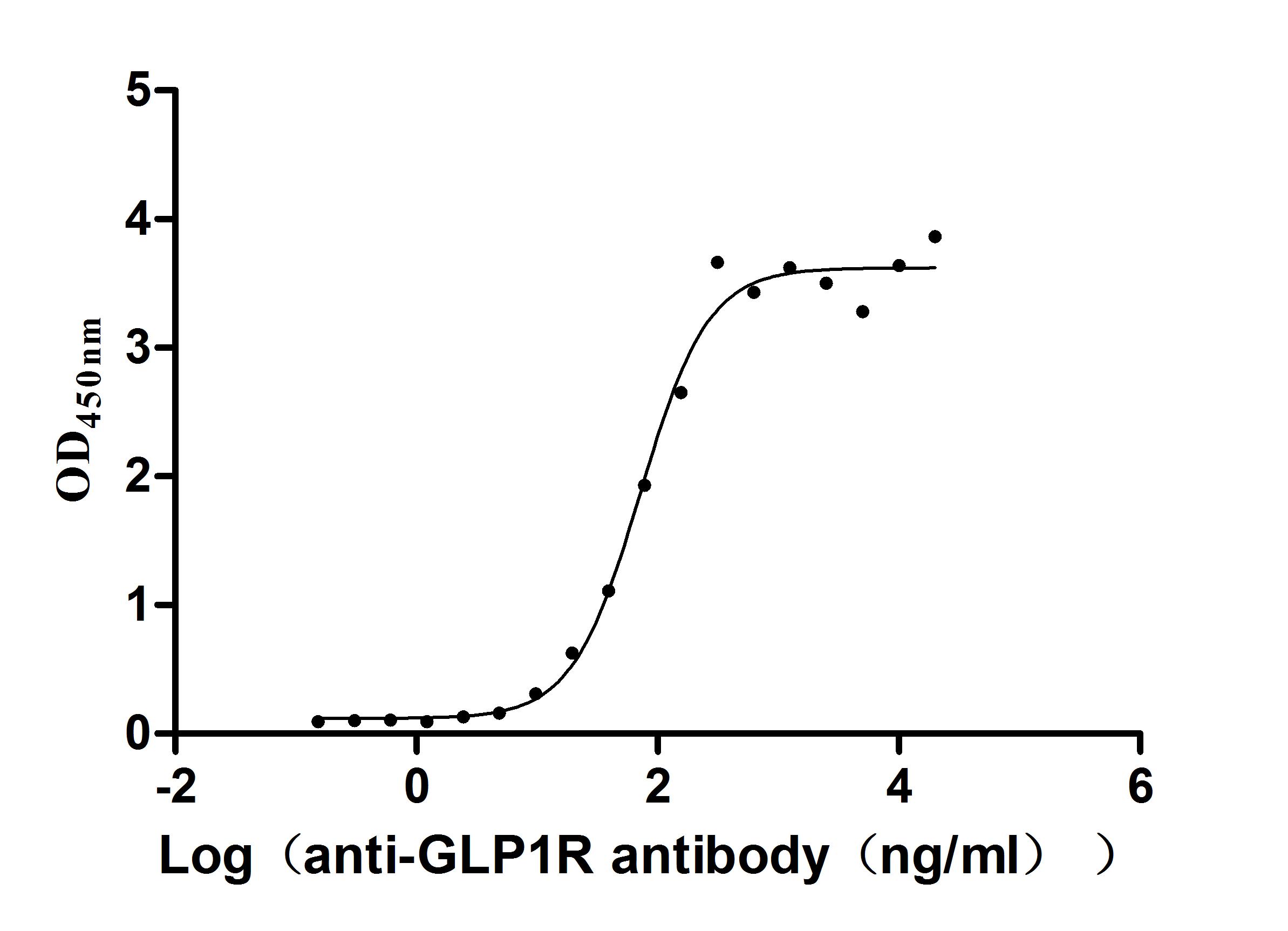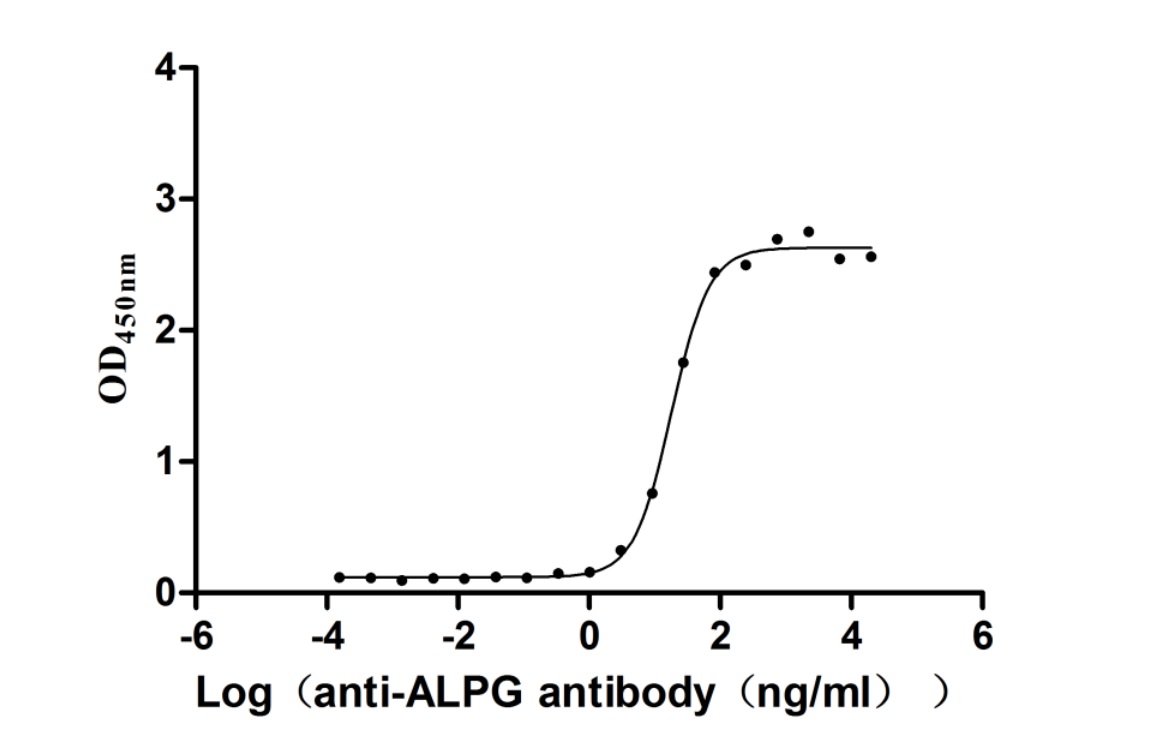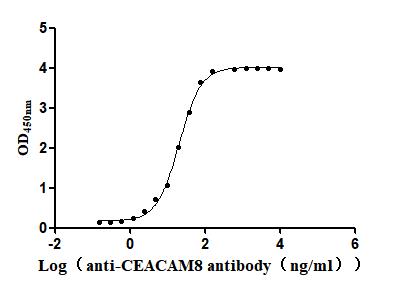Recombinant Arabidopsis thaliana Floral homeotic protein APETALA 2 (AP2)
-
中文名稱:Recombinant Arabidopsis thaliana Floral homeotic protein APETALA 2(AP2)
-
貨號:CSB-YP342522DOA
-
規(guī)格:
-
來源:Yeast
-
其他:
-
中文名稱:Recombinant Arabidopsis thaliana Floral homeotic protein APETALA 2(AP2)
-
貨號:CSB-EP342522DOA
-
規(guī)格:
-
來源:E.coli
-
其他:
-
中文名稱:Recombinant Arabidopsis thaliana Floral homeotic protein APETALA 2(AP2)
-
貨號:CSB-EP342522DOA-B
-
規(guī)格:
-
來源:E.coli
-
共軛:Avi-tag Biotinylated
E. coli biotin ligase (BirA) is highly specific in covalently attaching biotin to the 15 amino acid AviTag peptide. This recombinant protein was biotinylated in vivo by AviTag-BirA technology, which method is BriA catalyzes amide linkage between the biotin and the specific lysine of the AviTag.
-
其他:
-
中文名稱:Recombinant Arabidopsis thaliana Floral homeotic protein APETALA 2(AP2)
-
貨號:CSB-BP342522DOA
-
規(guī)格:
-
來源:Baculovirus
-
其他:
-
中文名稱:Recombinant Arabidopsis thaliana Floral homeotic protein APETALA 2(AP2)
-
貨號:CSB-MP342522DOA
-
規(guī)格:
-
來源:Mammalian cell
-
其他:
產(chǎn)品詳情
-
純度:>85% (SDS-PAGE)
-
基因名:AP2
-
Uniprot No.:
-
別名:AP2; At4g36920; AP22.49; C7A10.440Floral homeotic protein APETALA 2
-
種屬:Arabidopsis thaliana (Mouse-ear cress)
-
蛋白長度:full length protein
-
表達區(qū)域:1-432
-
氨基酸序列MWDLNDAPHQ TQREEESEEF CYSSPSKRVG SFSNSSSSAV VIEDGSDDDE LNRVRPNNPL VTHQFFPEMD SNGGGVASGF PRAHWFGVKF CQSDLATGSS AGKATNVAAA VVEPAQPLKK SRRGPRSRSS QYRGVTFYRR TGRWESHIWD CGKQVYLGGF DTAHAAARAY DRAAIKFRGV EADINFNIDD YDDDLKQMTN LTKEEFVHVL RRQSTGFPRG SSKYRGVTLH KCGRWEARMG QFLGKKYVYL GLFDTEVEAA RAYDKAAIKC NGKDAVTNFD PSIYDEELNA ESSGNPTTPQ DHNLDLSLGN SANSKHKSQD MRLRMNQQQQ DSLHSNEVLG LGQTGMLNHT PNSNHQFPGS SNIGSGGGFS LFPAAENHRF DGRASTNQVL TNAAASSGFS PHHHNQIFNS TSTPHQNWLQ TNGFQPPLMR PS
-
蛋白標簽:Tag?type?will?be?determined?during?the?manufacturing?process.
The tag type will be determined during production process. If you have specified tag type, please tell us and we will develop the specified tag preferentially. -
產(chǎn)品提供形式:Lyophilized powder
Note: We will preferentially ship the format that we have in stock, however, if you have any special requirement for the format, please remark your requirement when placing the order, we will prepare according to your demand. -
復溶:We recommend that this vial be briefly centrifuged prior to opening to bring the contents to the bottom. Please reconstitute protein in deionized sterile water to a concentration of 0.1-1.0 mg/mL.We recommend to add 5-50% of glycerol (final concentration) and aliquot for long-term storage at -20℃/-80℃. Our default final concentration of glycerol is 50%. Customers could use it as reference.
-
儲存條件:Store at -20°C/-80°C upon receipt, aliquoting is necessary for mutiple use. Avoid repeated freeze-thaw cycles.
-
保質期:The shelf life is related to many factors, storage state, buffer ingredients, storage temperature and the stability of the protein itself.
Generally, the shelf life of liquid form is 6 months at -20°C/-80°C. The shelf life of lyophilized form is 12 months at -20°C/-80°C. -
貨期:Delivery time may differ from different purchasing way or location, please kindly consult your local distributors for specific delivery time.Note: All of our proteins are default shipped with normal blue ice packs, if you request to ship with dry ice, please communicate with us in advance and extra fees will be charged.
-
注意事項:Repeated freezing and thawing is not recommended. Store working aliquots at 4°C for up to one week.
-
Datasheet :Please contact us to get it.
靶點詳情
-
功能:Probable transcriptional activator that promotes early floral meristem identity. Is required subsequently for the transition of an inflorescence meristem into a floral meristem. Plays a central role in the specification of floral identity, particularly for the normal development of sepals and petals in the wild-type flower, by spatially controlling the expression domains of multiple floral organ identity genes. Acts as A class cadastral protein by repressing the C class floral homeotic gene AGAMOUS in association with other repressors like LEUNIG and SEUSS. Directly represses AGAMOUS by recruiting the transcriptional corepressor TOPLESS and the histone deacetylase HDA19. It is also required during seed development.
-
基因功能參考文獻:
- AtFLO2 is strongly involved in regulation of translocation and transport of assimilates, and contributes greatly to quality control of the various processes involving substance supply or transfer, such as photoassimilation, leaf enlargement, yield of seeds in a silique and accumulation of seed storage compounds. PMID: 28158741
- Data show that FRUITFULL (FUL), a MADS-box gene involved in flowering and fruit development, has a key role in promoting meristem arrest, directly and negatively regulates APETALA2 expression in the shoot apical meristem. PMID: 29422669
- APETALA2 Gene Promoter Is Bidirectional and Functions as a Pollen- and Ovule-Specific Promoter in the Reverse Orientation PMID: 28130768
- upregulation of LINC-AP2 is negatively correlated with AP2 gene expression with Turnip crinkle virus infection in Arabidopsis. PMID: 27473526
- findings show that AP2 represses its target genes by physically recruiting the co-repressor TOPLESS and the histone deacetylase HDA19 PMID: 23034631
- APETALA2 recognizes and acts through an AT-rich sequence element to promote sepal and petal identities and restrict expression of AGAMOUS in whorls 1 and 2. PMID: 22513376
- AP2 acts to prevent replum overgrowth in developing fruit by negatively regulating BP and RPL, two genes that normally act to promote replum formation. PMID: 22031547
- AP2 influences development of the zygotic embryo and endosperm to repress seed size. PMID: 20033449
- The work demonstrates a novel role for BPMs as potential regulators that affect transcriptional activities of ERF/AP2 proteins. PMID: 19843165
- Control of seed mass and seed yield by the floral homeotic gene APETALA2. PMID: 15708974
- a role for AP2 in controlling seed mass. PMID: 15708976
- Genetic analysis shows that termination of the primary shoot meristem in l28 mutants requires an active CLV signaling pathway, indicating that AP2 functions in stem cell maintenance by modifying the WUS-CLV3 feedback loop. PMID: 16387832
- The expression of AP2 under the control of miR172 in N. benthiana is reported. PMID: 16897492
- miR172, a microRNA, serves as a negative regulator of AP2. PMID: 17573799
顯示更多
收起更多
-
亞細胞定位:Nucleus.
-
蛋白家族:AP2/ERF transcription factor family, AP2 subfamily
-
組織特異性:Sepals, petals, stamens, carpels, developing ovules, inflorescence stem, leaf and stem.
-
數(shù)據(jù)庫鏈接:
Most popular with customers
-
Recombinant Human Poliovirus receptor (PVR) (I340M), partial (Active)
Express system: Mammalian cell
Species: Homo sapiens (Human)
-
Recombinant Dog Angiopoietin-2 (ANGPT2) (Active)
Express system: Mammalian cell
Species: Canis lupus familiaris (Dog) (Canis familiaris)
-
Express system: Mammalian cell
Species: Homo sapiens (Human)
-
Recombinant Mouse Claudin-18.2 (Cldn18.2)-VLPs (Active)
Express system: Mammalian cell
Species: Mus musculus (Mouse)
-
Recombinant Macaca fascicularis CD93 molecule (CD93), partial (Active)
Express system: Mammalian cell
Species: Macaca fascicularis (Crab-eating macaque) (Cynomolgus monkey)
-
Recombinant Human Glucagon-like peptide 1 receptor (GLP1R), partial (Active)
Express system: Mammalian cell
Species: Homo sapiens (Human)
-
Recombinant Human Alkaline phosphatase, germ cell type (ALPG) (Active)
Express system: Mammalian cell
Species: Homo sapiens (Human)
-
Recombinant Human Carcinoembryonic antigen-related cell adhesion molecule 8(CEACAM8) (Active)
Express system: Mammalian cell
Species: Homo sapiens (Human)


-AC1.jpg)
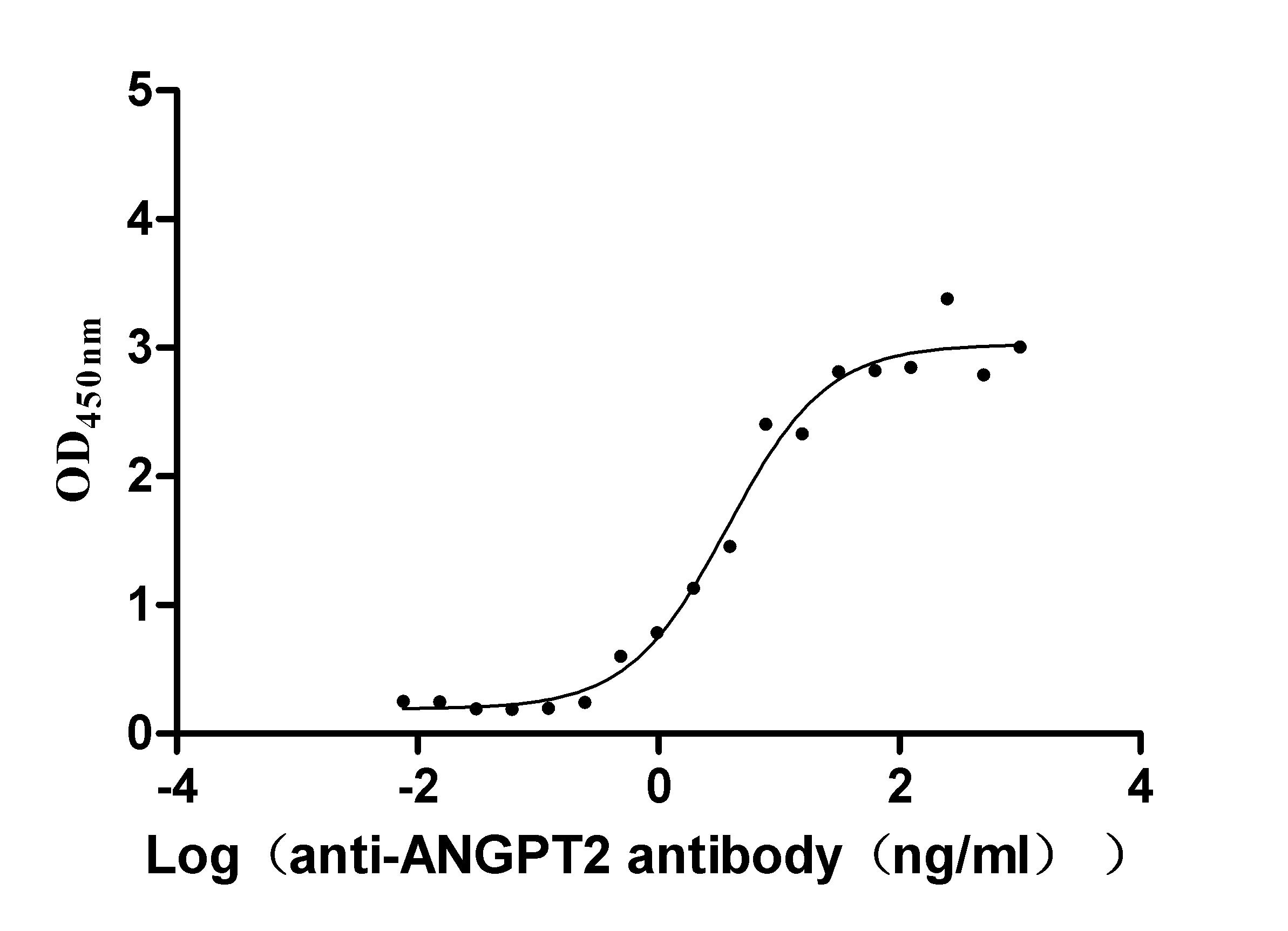
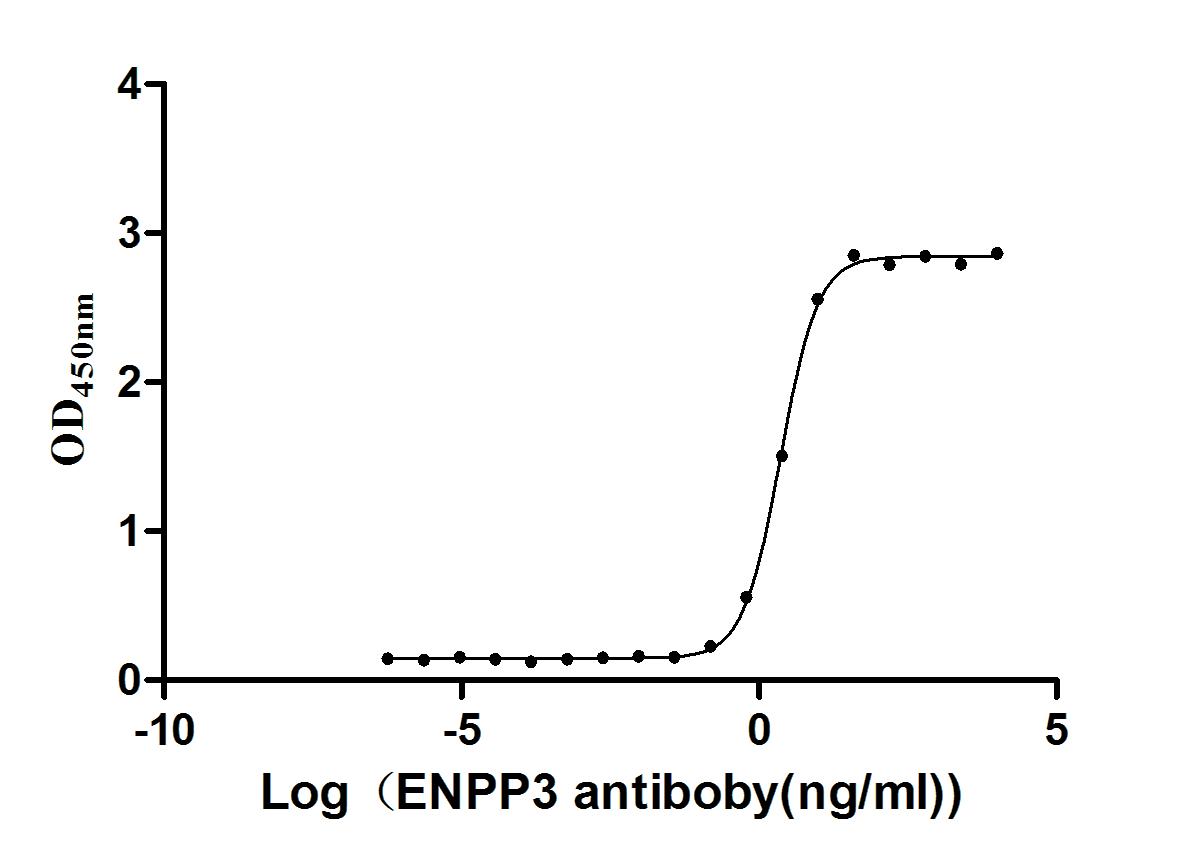
-AC1.jpg)
